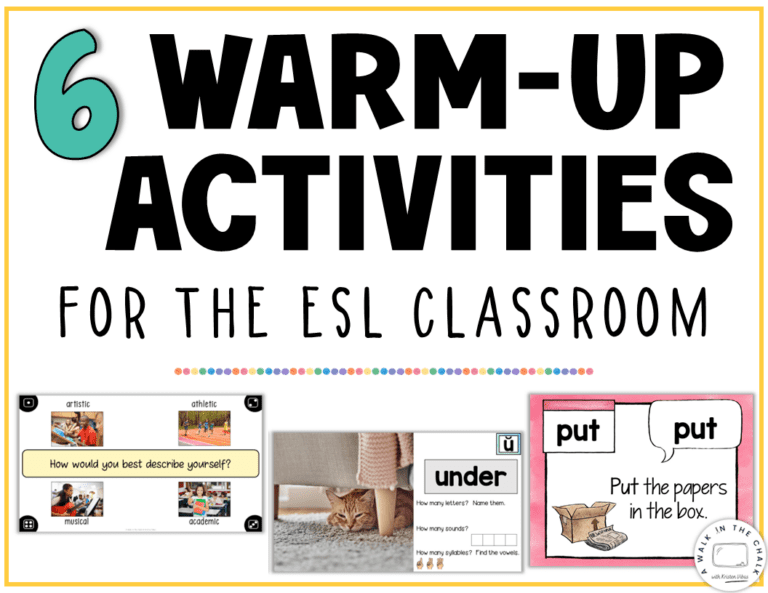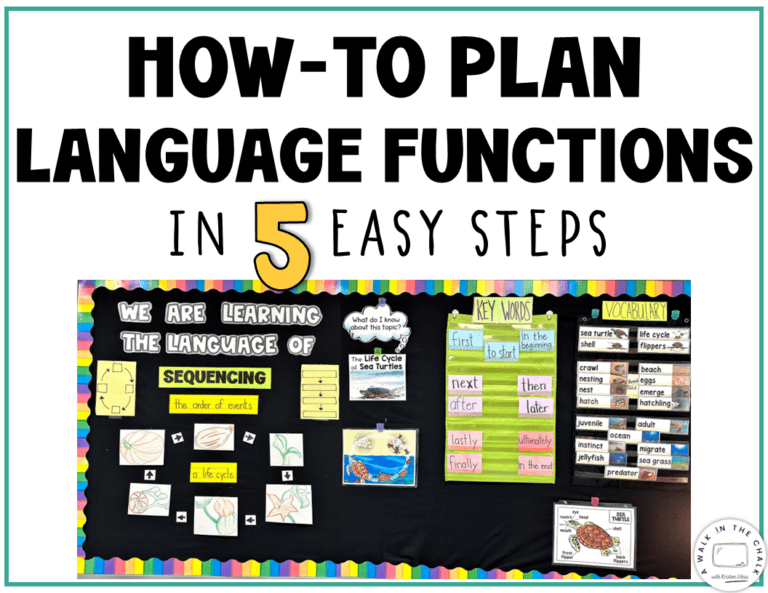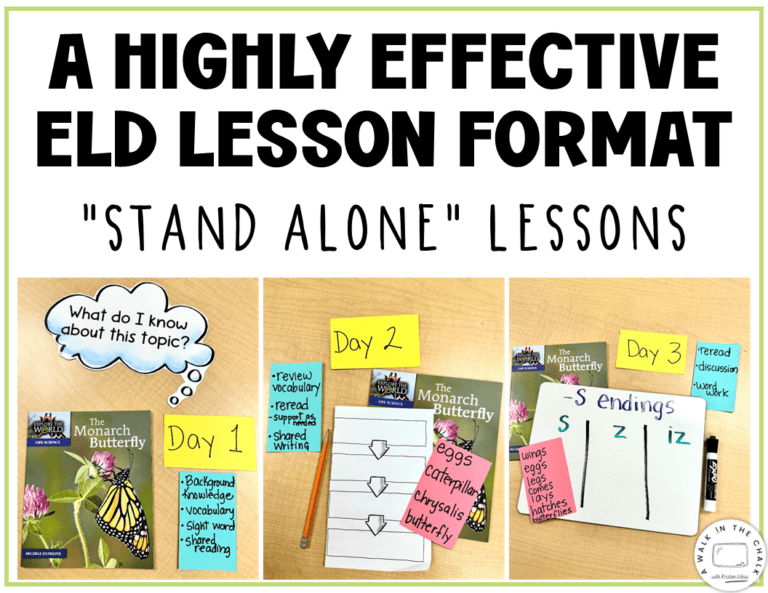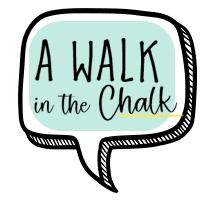English learners in the US are federally required to participate in an annual English language proficiency assessment in order to measure growth in all four language domains. In my state, students take the WIDA ACCESS assessment. Currently there are 41 states and territories that use ACCESS; so how can teachers best prepare students for the assessment? Here are my TOP 5 tips and strategies for setting students up for success on WIDA ACCESS.
1- Start ACCESS Test Prep Early
Allow plenty of time for preparing – things inevitably come up and cut away at instructional time. If you wait until the last minute to start prepping, you risk not giving students the amount of time they need in order to effectively prepare.
Be aware of the skills students will need for their assessments, then build and practice those skills from the start of the year. For example, I want my students speaking and writing in complete sentences, so I like to give them practice with restating the question or prompt. Incorporating this quick warm-up activity gives them practice throughout the year. They don’t realize that I’m prepping them for their test, but I am;)
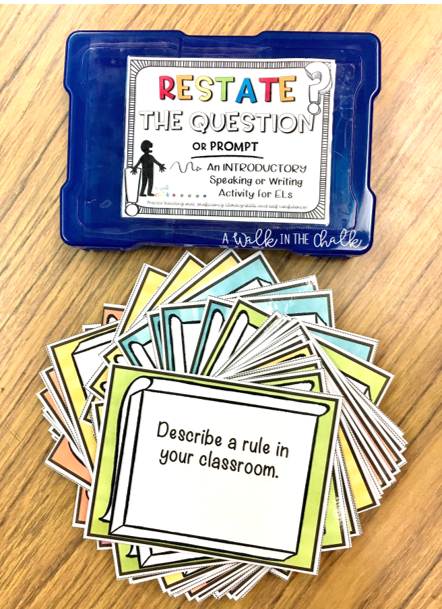
The key to success, I think, is incorporating activities into ELD instruction from the beginning of the school year that build upon the skills they’ll need on the assessments.
2- Become Familiar with the Testing Format
The format of ACCESS is unique and students really only come in contact with it during testing season. If students aren’t exposed beforehand, then their test results may reflect inexperience with the format. So first and foremost, familiarize yourself with the format of the assessments for each grade level/tier on your caseload, then incorporate activities into your weekly lesson plans that are similar to the format so that students become familiar.
3- Utilize WIDA’s Test Practice & Sample Materials
Use the resources provided on the WIDA website. You won’t find everything you’ll need, but it’s a good place to start. WIDA recently added a few new practice assessments, which I’m excited about.
It’s worth noting – the practice materials do NOT have the length or rigor of the actual assessments.
The length of the test is significant, IMO, so stamina is also a factor to consider, especially for first graders. I was amazed at the length of the Grade 1, Tier A writing assessment. I had to check my script a couple of times because I thought, “this can’t be tier A!” It’s a long assessment, and I’m hoping WIDA will revise it soon.
4- Practice Test Taking Strategies
As time gets closer to the testing window, begin adding test taking strategy lessons to your plan book.
Primary students will be assessed on writing words, sentences and stories. So, practice what students can do when they feel “stuck.” For example: use the pictures – use the word bank words – write what you DO know!
Upper elementary and middle school students should practice writing about a topic using notes provided (without copying from the notes). Teach and practice how to plan a piece of writing, how to respond effectively to a prompt, and how to reread and edit/revise their writing.
I frequently remind my students that if they don’t know what to say on the speaking assessment, talk about the pictures. The goal is to talk-talk-talk.
On the reading assessment, look carefully at the pictures, read the questions first, look for key words and locate the answer in the text.
On the listening assessment, stay focused and listen carefully because you’ll only hear the information one time.
ACCESS Speaking Assessment
This assessment is likely the most challenging for my students for a variety of reasons. My older students (5th/6th graders) are self-conscious about recording. They don’t want others hearing them speak. It seems they’d rather do poorly on the assessment than be embarrassed in front of classmates. Even though I spread them out as far as I can, put up privacy offices so they can’t see each other, and encourage them to do their best, it’s still a huge struggle.
How do you get your older students to not worry about others hearing them? On the flip side, I always have the student (typically younger) who really doesn’t care who hears them and I have to keep reminding them to lower their voice during their speaking assessment. 😂
I want my students to feel comfortable recording their speaking so I incorporate recording activities from the start of the year and try to make this a regular activity until testing begins. Some recording applications you could use are CANVA, VocaRoo and Padlet. PowerPoint also has a recording option.
I started using Canva last year in 2023 when Flip was no longer available. I create a slide for each language function unit I teach, then at the end of the unit students provide a recorded speaking response to a prompt on the topic they’ve been learning about.
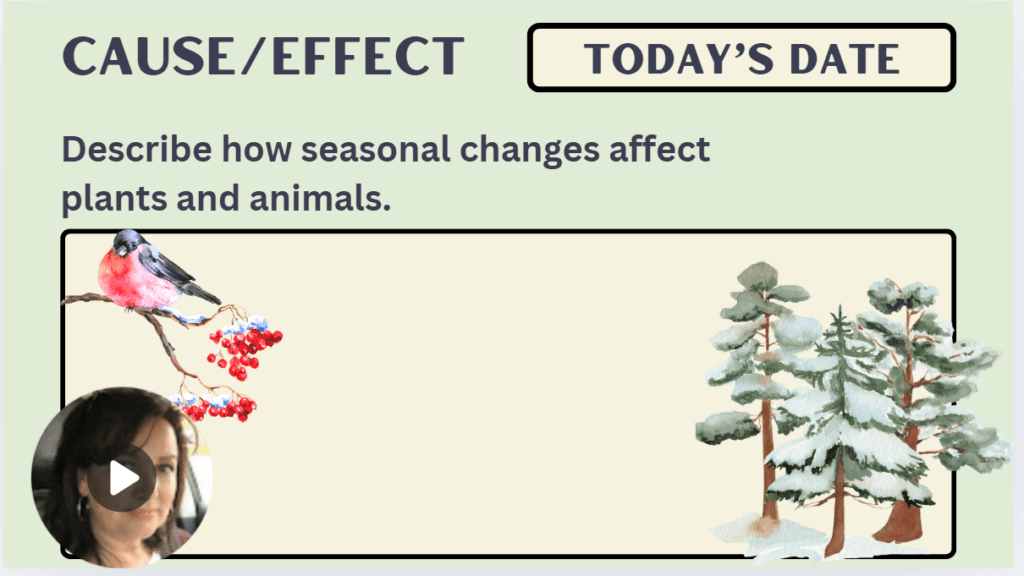
Each new unit’s recording is added to their Canva Speaking Slides so by the end of the year they each have a portfolio of their speaking progress. It’s worked out great so far and they actually seem to enjoy it.
ACCESS Writing Assessment
Incorporate activities into ELD instruction throughout the year that build the skills needed on the assessment. For example, one of the practice assessments on the WIDA website is a 3rd grade compare and contrast writing activity. In the fall, I incorporate compare and contrast activities into my instruction because 1- they need the academic language for comparing/contrasting and 2- they’ll likely need this skill for the ACCESS assessment.
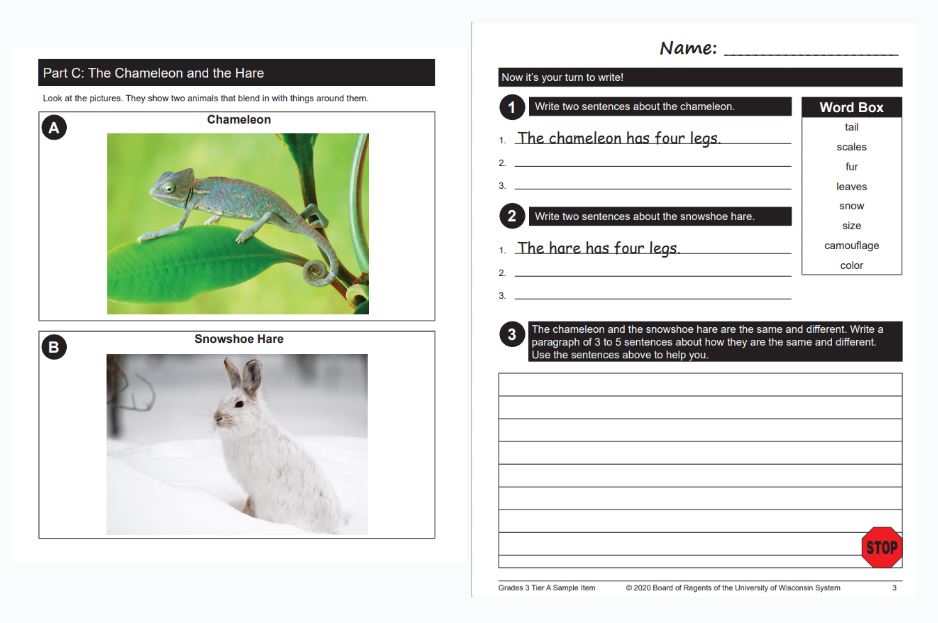
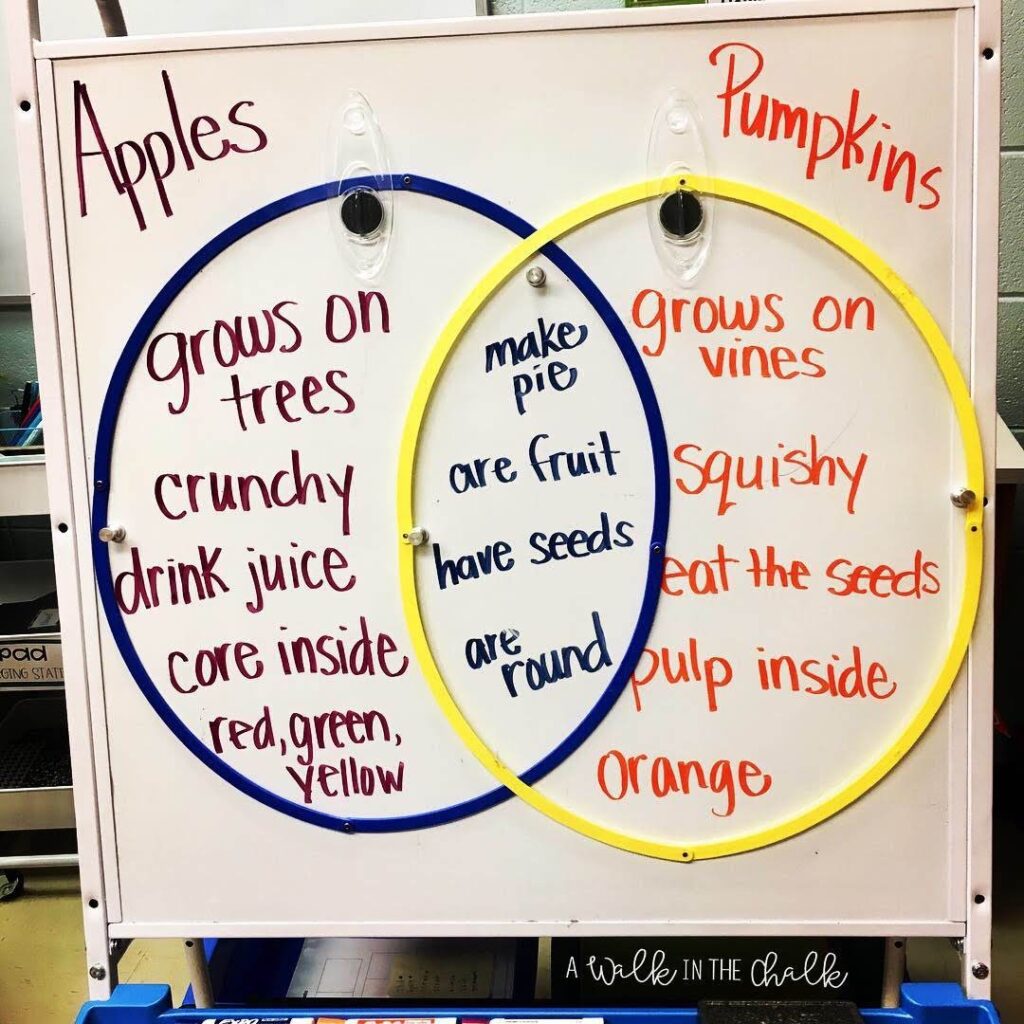
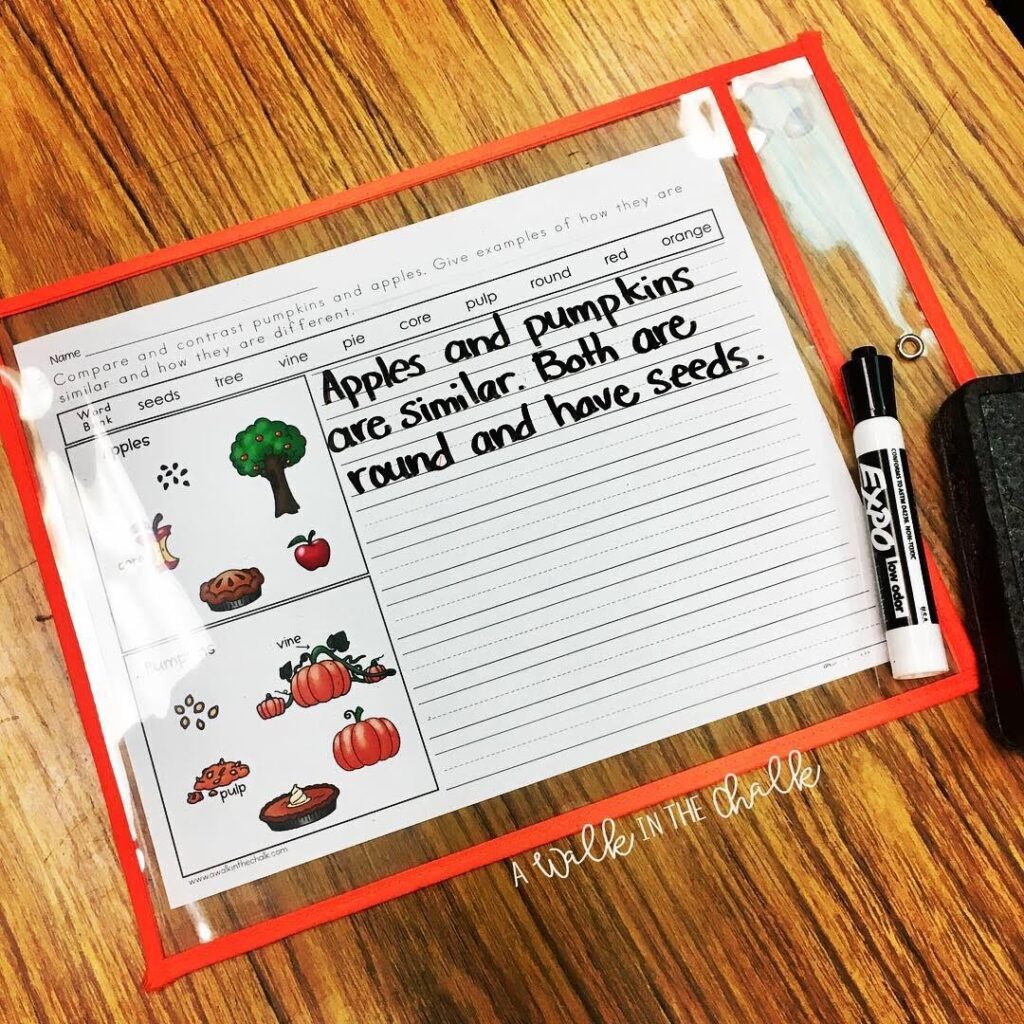
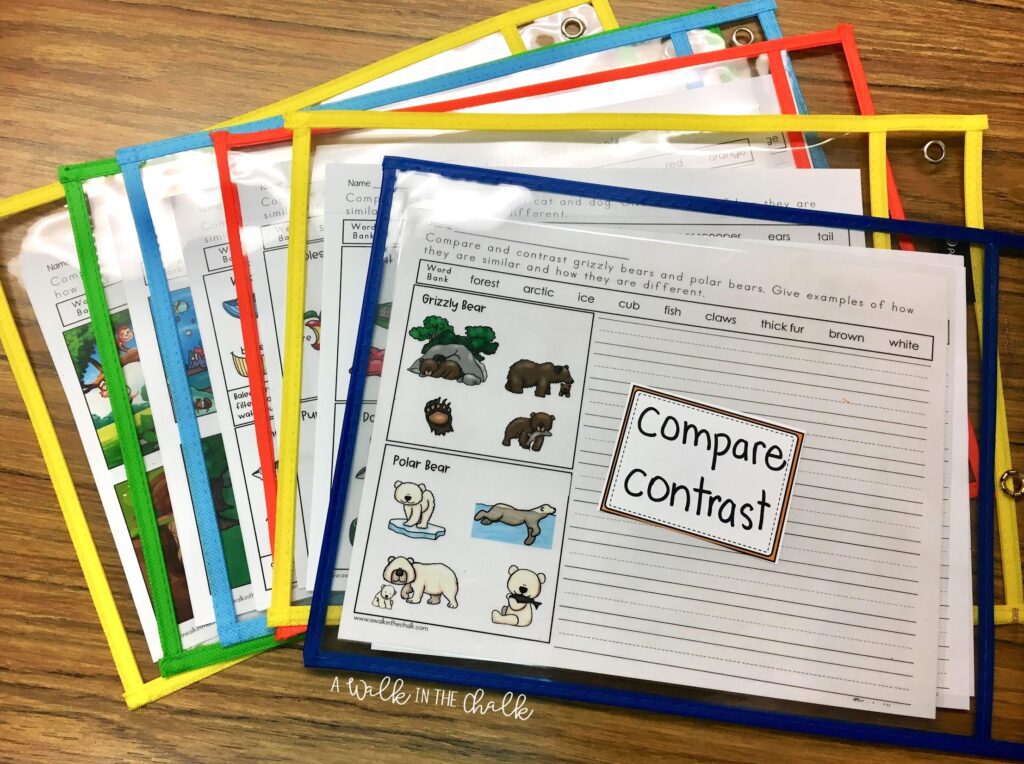
Incorporating activities into ELD instruction throughout the year that builds language AND prepares for the annual assessment is key to setting students up for success.

Being aware of the skills students will need to be successful is necessary for both planning ELD instruction and effectively preparing students for the assessments. For example, students in grades 4 and above will do their writing assessment online, so keyboarding is a skill they will need in order to be successful.
I like to use the snipping tool on my laptop to snag an image from the WIDA writing practice and put it into a Google Slide so that my students can practice typing their responses. It also allows me to provide them with feedback.
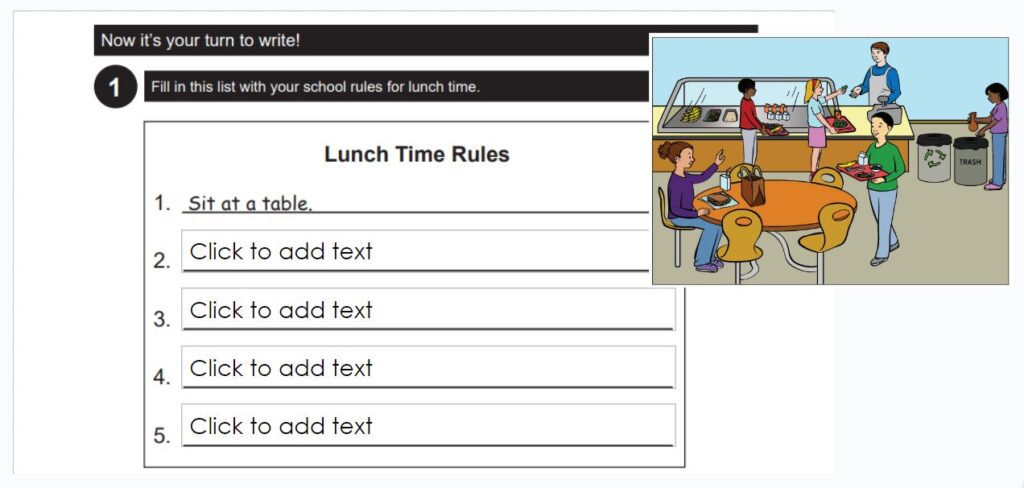
Another strategy I have students practice is write about EACH picture. When given a series of pictures, be sure to write about each one of them.
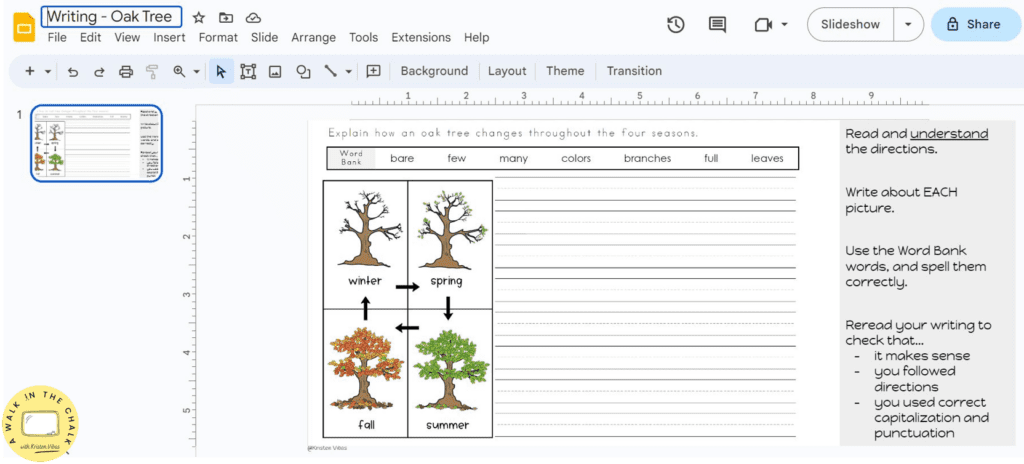
Give a Pep-Talk
Just before the actual assessment, I give one final pep-talk on doing their best. We go over things like getting a good night sleep, eating a good breakfast, staying focused, etc.
We also go over their goals, which they set at the beginning of the year. They know each domain score from last year and have selected 2 domains to increase, along with how much they hope to increase them by. It’s important for students to have goals and to know what they’re working towards.
Students take a LOT of tests these days, and they don’t always know which ones are important and which ones aren’t (really). This one is important, so being prepared and giving their best effort is key to them getting their best scores.
But with that, I remind them that a test score does NOT define who they are, and that they demonstrate in many ways just how much they’re progressing. 😉
5- After ACCESS Testing
Lastly, once testing is complete, my first lesson back with students is a reflection activity. I hang a piece of chart paper on the board divided into 4 sections, one for each domain. We discuss as a group some of the things my students found success with, along with some of their challenges. This is great information for me and it provides me with concrete ideas to better support students next fall.
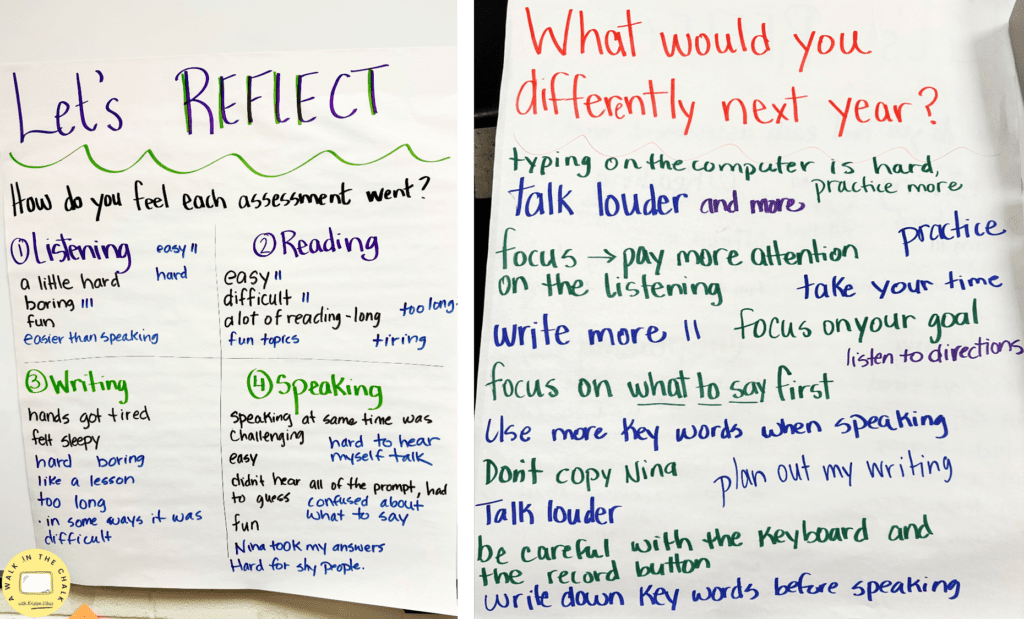
Below are a few items I use throughout the year for building language in my ELD instruction & ACCESS test prep.
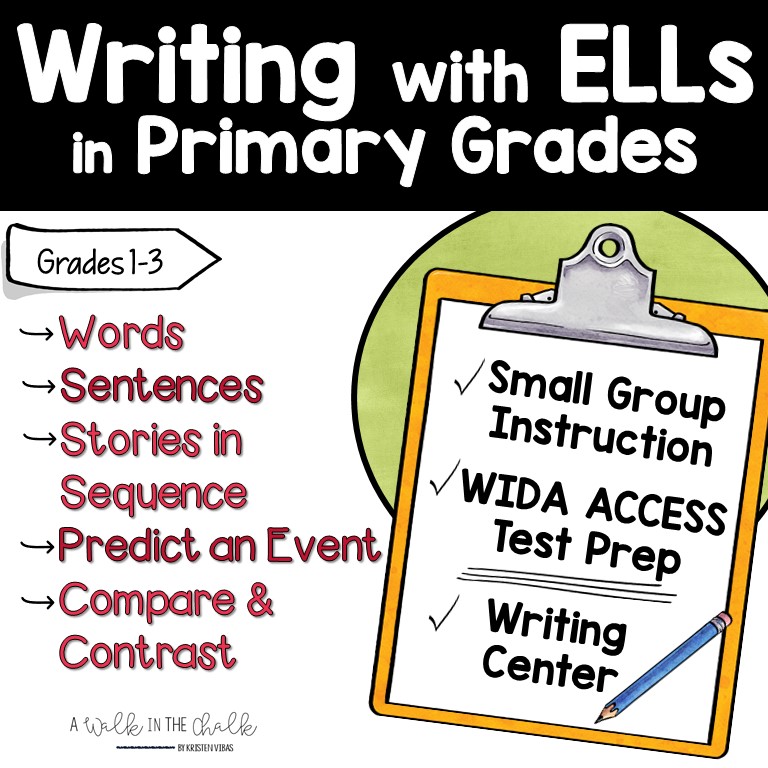
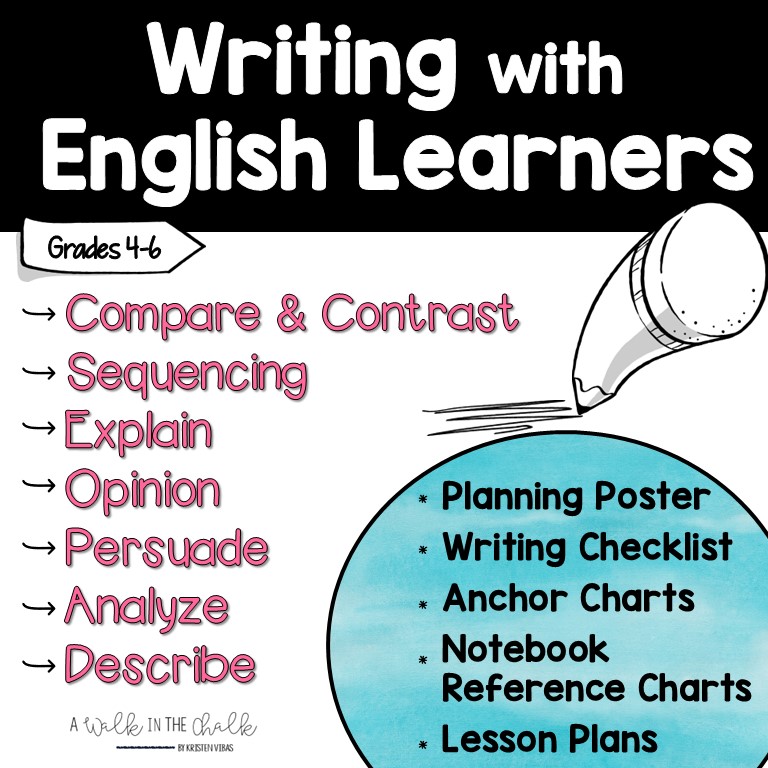
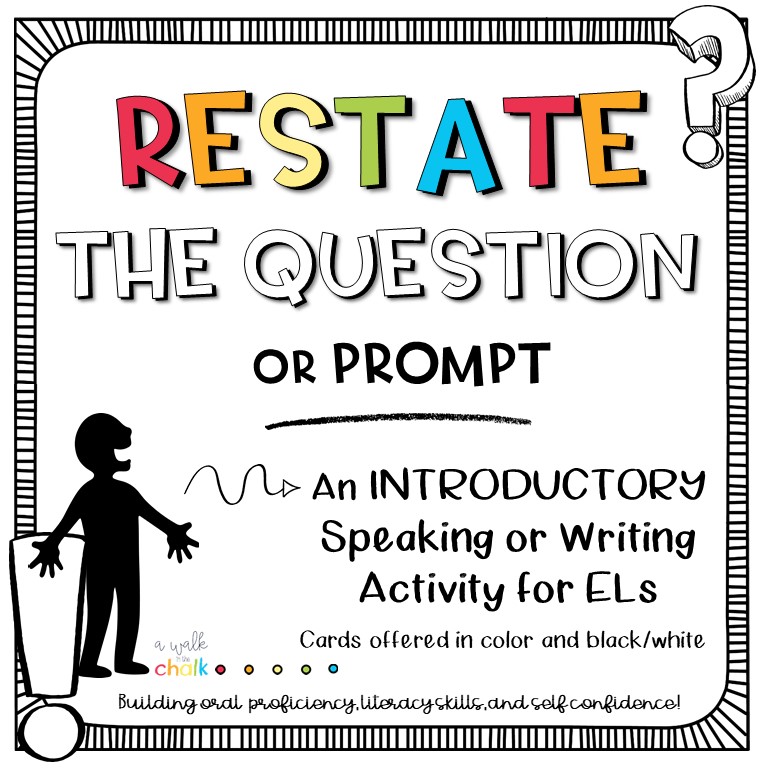
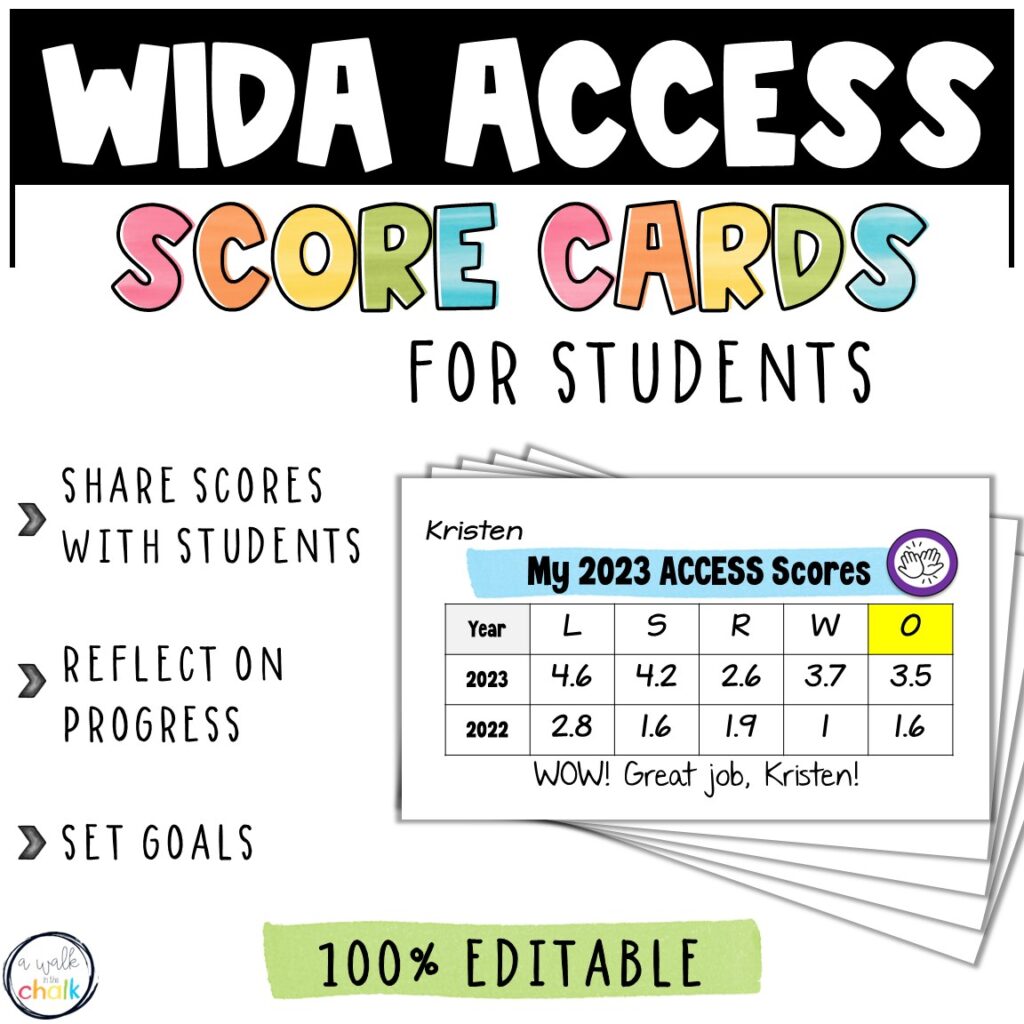
My language function units are also great instructional resources for upper-elementary intermediate and advanced level students. Each one incorporates listening, speaking, reading and writing activities and supports the skills needed on the ACCESS assessments.
ACCESS Test Prep Recap
1 – Start test prepping sooner rather than later.
2 – Become familiar with the testing format.
3 – Utilize the practice materials on the WIDA website.
4 – Practice ACCESS test taking strategies.
5 – Post-test reflection activity provides valuable feedback.
Most importantly, incorporate ACCESS type activities into your ELD instruction throughout the entire year to build the skills students need on the assessment.
Finally, it’s a collective responsibility of all teachers to build the language skills of our multilingual learners. Share with general education classroom teachers that the best way they can support our shared students in becoming English proficient AND doing well on ACCESS is by ensuring that daily instruction includes multiple opportunities for students to practice listening, reading, speaking and writing in English.
For ideas on incorporating language functions into your ELD instruction, check out this post!
Happy Teaching & Test Prepping! ✨

